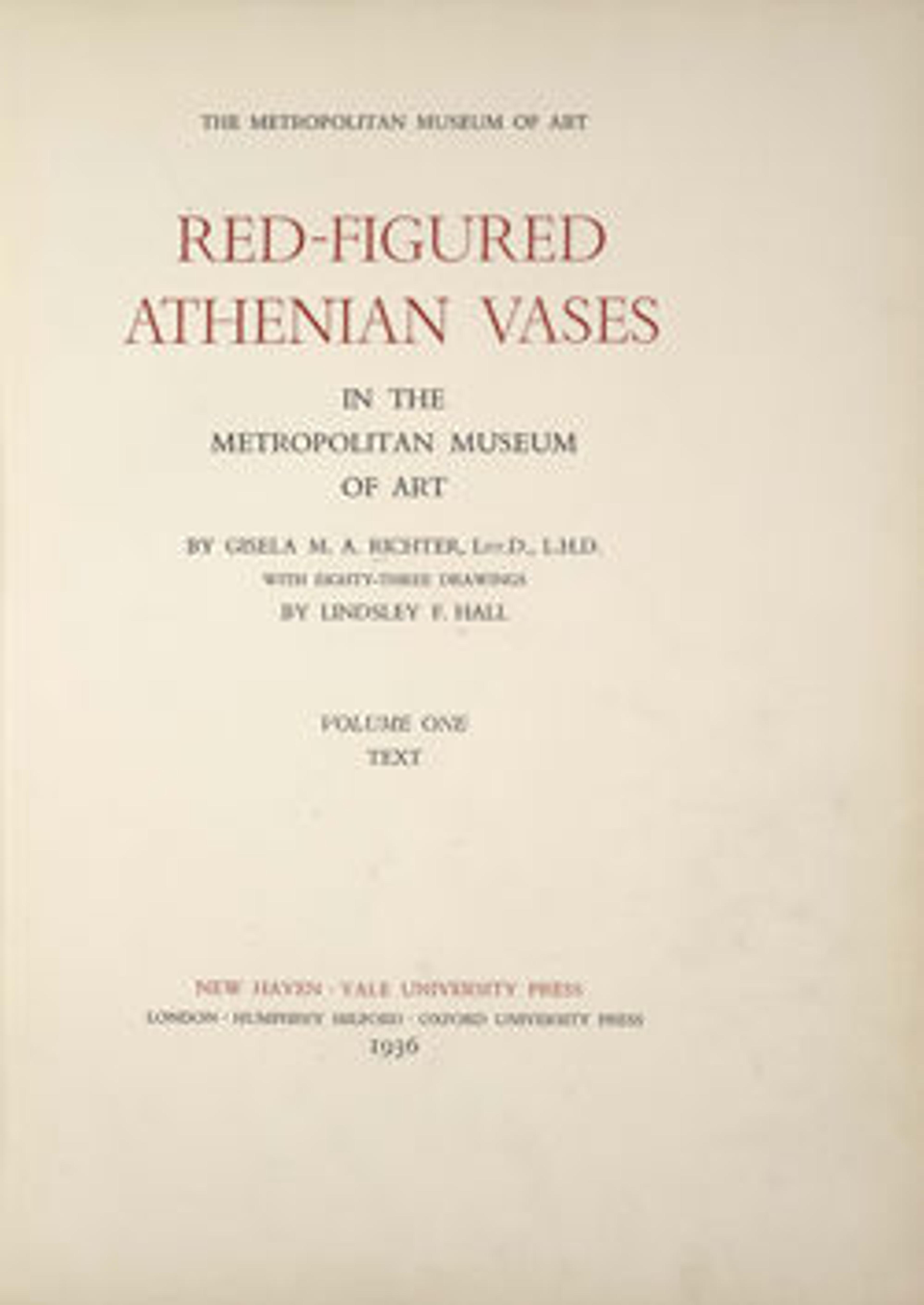Terracotta calyx-krater (bowl for mixing wine and water)
Obverse, Kadmos and the snake
Reverse, man between two women
Kadmos, son of Agenor king of Tyre, was told by the oracle at Delphi to follow a cow until she lay down and to found a city there. The place was Thebes. In order to sacrifice the cow to Athena, Kadmos needed water. The nearest spring was guarded by a serpent, son of Ares. The representation here shows Athena seconding Kadmos, who raises his hydria (water jar) against the serpent. Ares stands at the far right. The seated woman is probably the nymph associated with the spring or a personification of Thebes. Kadmos kills the monster, and sowing its teeth in the ground, he produces the inhabitants of the new city.
Reverse, man between two women
Kadmos, son of Agenor king of Tyre, was told by the oracle at Delphi to follow a cow until she lay down and to found a city there. The place was Thebes. In order to sacrifice the cow to Athena, Kadmos needed water. The nearest spring was guarded by a serpent, son of Ares. The representation here shows Athena seconding Kadmos, who raises his hydria (water jar) against the serpent. Ares stands at the far right. The seated woman is probably the nymph associated with the spring or a personification of Thebes. Kadmos kills the monster, and sowing its teeth in the ground, he produces the inhabitants of the new city.
Artwork Details
- Title: Terracotta calyx-krater (bowl for mixing wine and water)
- Artist: Attributed to the Spreckles Painter
- Period: Classical
- Date: ca. 450 BCE
- Culture: Greek, Attic
- Medium: Terracotta; red-figure
- Dimensions: H. 18 in. (45.7 cm)
diameter of mouth 17 5/8 in. (44.7 cm) - Classification: Vases
- Credit Line: Rogers Fund, 1907
- Object Number: 07.286.66
- Curatorial Department: Greek and Roman Art
More Artwork
Research Resources
The Met provides unparalleled resources for research and welcomes an international community of students and scholars. The Met's Open Access API is where creators and researchers can connect to the The Met collection. Open Access data and public domain images are available for unrestricted commercial and noncommercial use without permission or fee.
To request images under copyright and other restrictions, please use this Image Request form.
Feedback
We continue to research and examine historical and cultural context for objects in The Met collection. If you have comments or questions about this object record, please complete and submit this form. The Museum looks forward to receiving your comments.
